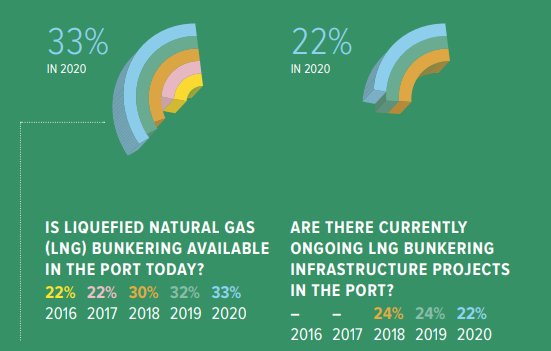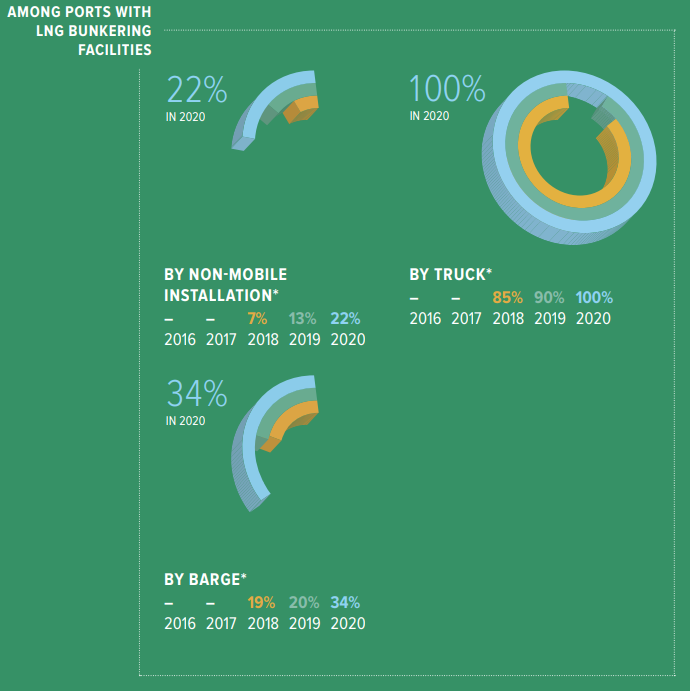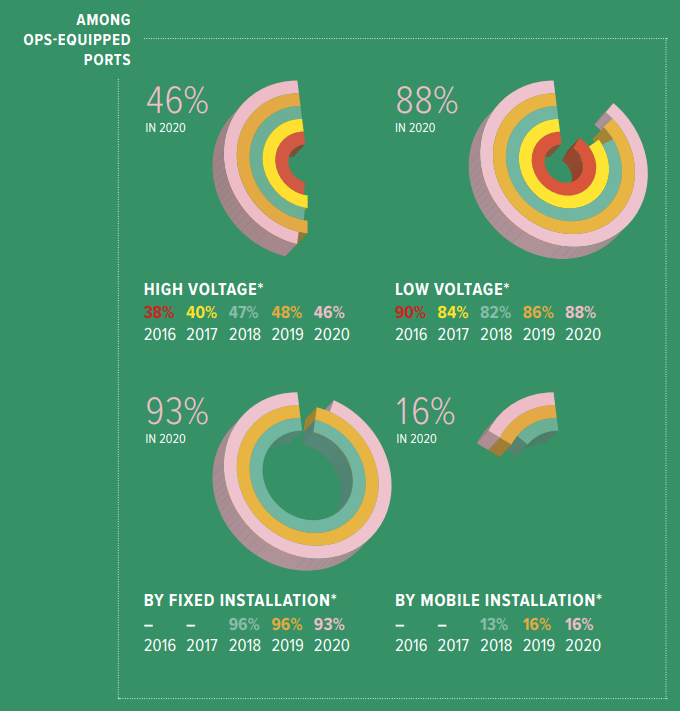The European Sea Ports Organization (ESPO) presented its fifth annual Environmental Report during a dedicated webinar. ESPO's 2020 Environmental Report includes more than 60 different environmental performance benchmarks, such as the top 10 environmental priorities for European ports, and figures on green services for maritime transport (shore power, LNG and differentiated port charges depending on the environment).
Regarding maritime transport services, a third of the ports have facilitated the supply of LNG. In parallel, more than half of the ports that responded offer shore power supply (OPS) and a growing number of ports (57%) offer differentiated quotas for vessels that go beyond the regulatory standards, with air emissions
The availability of LNG bunkering in European ports continues to increase. This is a positive sign in relation to the application of the Alternative Fuels Infrastructure Directive in terms of the provision of LNG supply from ports of facilities of the basic network of the TEN-T by 2025. Today, a a third of the ports offer this service to ships. This represents an increase from 11% since 2016.. As shown in the figure below, around a fifth of the participating ports are planning LNG refueling facilities for the future.

LNG service offer in European ports
All ports that offer LNG can provide it through trucks. A third of the ports can also provide LNG per barge, and the 22% can supply it through non-mobile facilities. It should be noted that some ports opt for more than one type of supply facility.

Means available for the supply of LNG in European ports
The percentage of ports that plan to offer OPS in the next two years has increased significantly from 27% in 2018 to 40% in 2020. As shown in the following, more than half of the ports in demand provide operations in some of their bays.

Offer of OPS services in European ports
In absolute value, the ports that offer OPS have increased from 32 (2016) to 56 ports (2020). The 88% of these ports offer low voltage OPS, which is mainly related to inland transport and domestic vessels, and auxiliary vessels (eg tugboats and / or other port authority vessels).
The high-voltage OPS figure is most relevant for commercial ocean-going vessels, where about half of the ports offer high-voltage OPS. This value has been relatively stable since 2018. The reason for this could be related to the higher cost of using electricity compared to tax-exempt fossil marine fuels. When docked ships are connected to the shoreline electrical system, they have to pay the energy tax applied to electricity. A limited number of EU Member States, such as Sweden, Germany, Denmark, France and Spain, have applied for and obtained a temporary permit from the EU to apply a reduced tax rate on shore-based electricity for ships. However, this tax exemption is limited in time and Member States first have to go through a lengthy administrative process at EU level to obtain it.

Connections available for OPS supply in European ports
The provision of PAHO also has other barriers such as increased investment costs of connection to the network and technical challenges. In principle, seagoing vessels are equipped with 60 Hz and ports need to invest in frequency converters and high voltage to cope with the difference in frequency between the electricity from the grid (50 Hz) and the ship's equipment ( 60 Hz). Electricity shortages in the city or at the regional level can be an additional barrier (TrainMoS II, 2015). In the 93% of the OPS-equipped ports, electricity is supplied through fixed installations and in the 16% of them through mobile installations. It should be noted that some ports opt for fixed and mobile installations.
